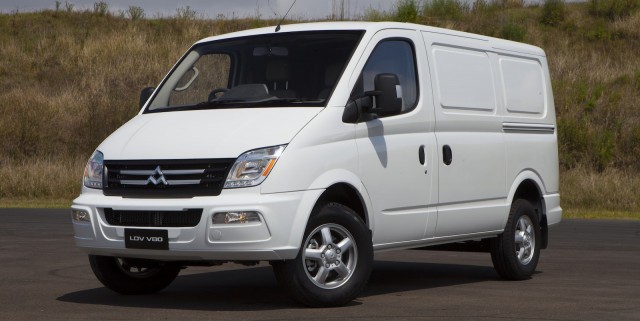
The LDV V80 has been introduced to Australia as China’s biggest automotive company looks to take on the might of the Toyota HiAce and Hyundai iLoad in the commercial van market.
A division of the Shanghai Automotive Industrial Corporation (SAIC) that produced a whopping 4.5 million cars in 2012, the LDV commercial vehicle brand is distributed by White Motor Corporation (WMC) in Australia and is sold out of 30 dealers across the country.
LDV is short for Leyland DAF vans, a manufacturer with a long history that used to be based in England.
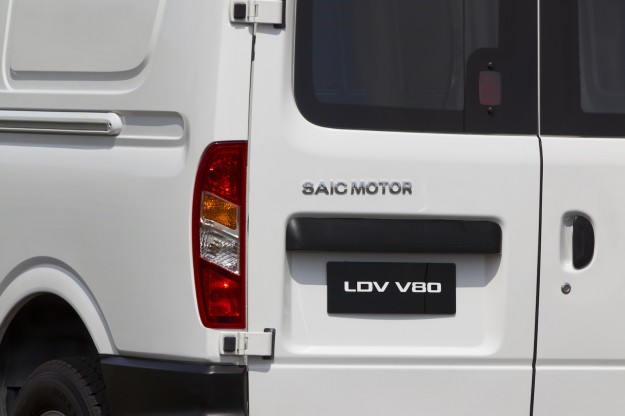
The company hit trouble in 2005 and was sold to a US equity firm and then to the Russian GAZ group, which pulled its funding in 2008. Despite hopes Volkswagen or a Malaysian investment firm would take over, LDV was wound up and the factory was closed.
SAIC bought the rights to the company in 2009 and now produces its sole product, the V80 van, in China.
There are two versions of the LDV V80: a short-wheelbase unit that is aimed at the iLoad and HiAce and a long-wheelbase version (with a mid-roof or high-roof), which is best compared to larger machines such as the Mercedes-Benz Sprinter, Fiat Ducato and Ford Transit. They are both available exclusively with a diesel engine and a manual gearbox.
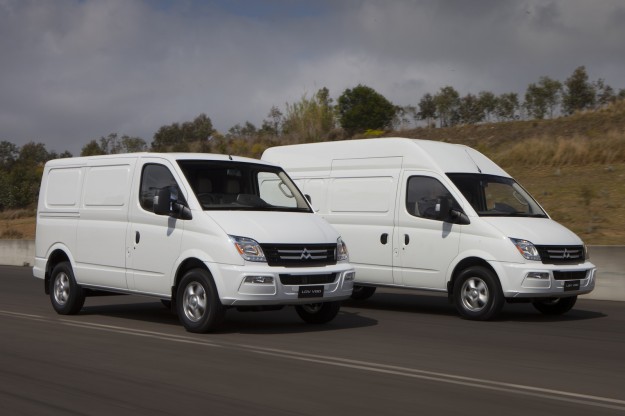
The LDV V80 undercuts its rivals on price, but not by as much as you might expect for a Chinese brand aiming to snatch customers from Japanese, European and South Korean companies.
The smaller V80 costs $32,900, which works out to $2000 less than an equivalent iLoad diesel and around $4000 less than a diesel HiAce. The larger long-wheelbase V80 costs $37,990 in mid-roof guise, while the high roof version is $39,990.
LDV’s idea is to add more equipment to lure customers. As such, all LDV V80s get cruise control, 16-inch alloy wheels, LED daytime running lights, air conditioning, keyless entry, dual sliding doors and rear barn doors.
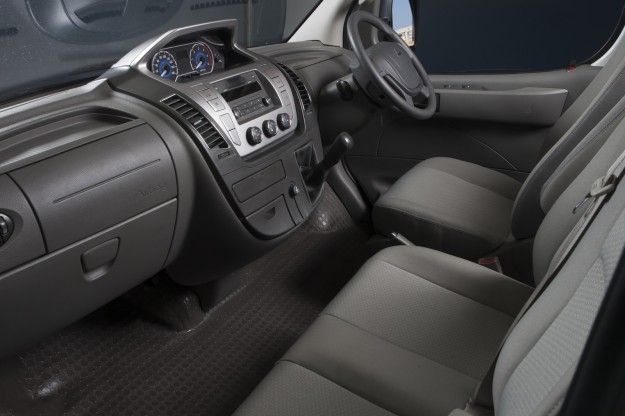
There is a radio and head unit with USB and auxiliary plugs but no Bluetooth phone connectivity – a crucial tool for tradies – at this stage, although LDV says it is coming within months.
Front driver and passenger airbags and anti-skid brakes (ABS) are standard. Electronic stability control (ESC) is not available for now, but is expected to be offered early next year. Side airbags are not expected to available for at least two years.
The LDV V80 has not been crash-tested by independent safety authority ANCAP or its European equivalent. LDV says internal testing to NCAP standards suggests it should get four stars, but it doesn’t count officially until the test has been done properly. Some rival vans such as the HiAce, iLoad and Volkswagen Transporter score four stars in NCAP tests, while select models in the Mercedes Vito range earn five stars. The Transit gets three, while the truly awful Mitsubishi Express gets just one.
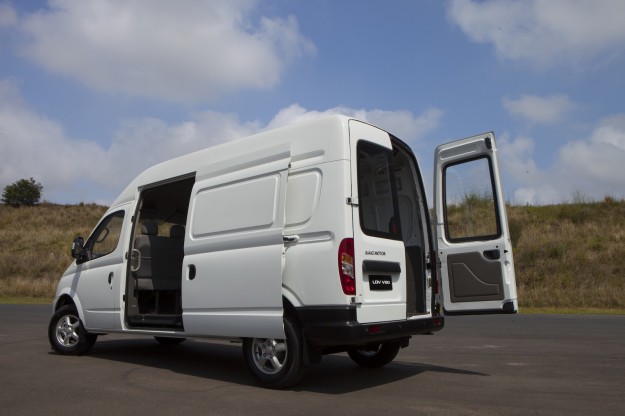
The LDV V80 is not a bad looking van. It is not the most advanced design, but the style is neat and tidy and the LED strips help.
The V80 was originally a joint development between LDV and Daewoo – the latter pulling out in 2000 when it struck financial trouble. LDV then continued on and brought it to market in 2005.
Some equipment has been added and most of the component suppliers have been altered, but today’s van is still largely the same as it was in 2005.
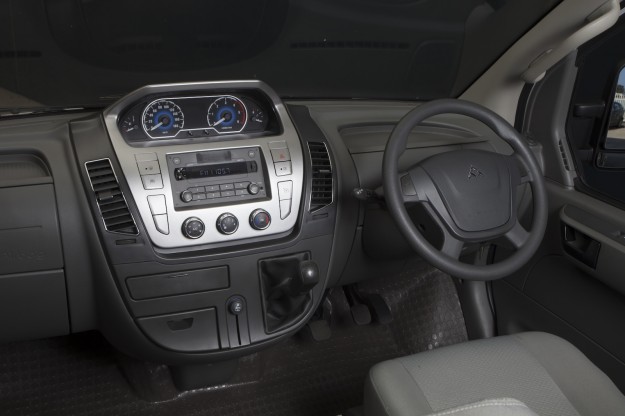
The interior quality is far better than other Chinese vehicles and really not that far off its key rivals. It has a simple dash design and hard plastics, but that is normal in these vans.
One of the problems with the interior is the instrument cluster being located in the middle of the dashboard, with the speedo on the passenger side. It is so far from the driver that it’s impossible to get an accurate idea of your speed and also requires taking your eyes off the road to check it.
Another interior issue shows up when it is time to get out. The V80 locks its doors automatically when you get going and doesn’t unlock when you pull the door handle. Instead, you have to press a button on the dashboard near the steering wheel to get out of the vehicle. The passenger has no way of getting out – creepy. LDV says this will soon be changed.
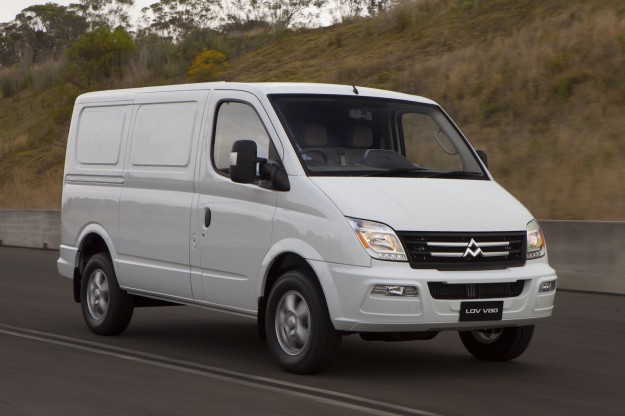
The V80 drives very similarly to other vans in its class. It runs a 2.5-litre common rail turbo diesel engine designed by VM Motori and made by SAIC in China. The powerplant generates 100kW and 330Nm and delivers a fuel consumption figure of 7.7L/100km in the smaller van.
It is best described as adequate. Not much happens below 2200rpm, which is annoying in stop-start traffic, but it gets going after that. Even then it’s not a cracker, unlike some of its potent rivals, but the engine is quite smooth and relatively quiet. The power goes through the front wheels, which has its advantages, but some operators carrying heavy loads prefer a rear-driver.
The Hyundai-sourced five-speed manual shifts well and the clutch is light. LDV is currently developing an automatic transmission for the V80 – potentially launching here next year – which would expand the van’s appeal considerably.
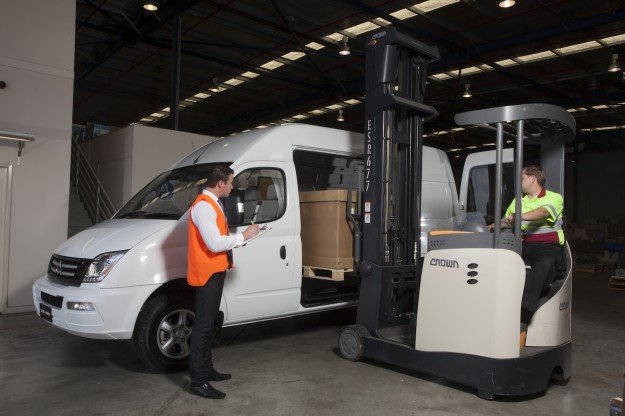
While it does have standard cruise control, the system is not like other units in that it is not adjustable. Press the button on the dashboard and the van will hold a set speed, but it is not possible to increase or decrease the speed. The driver must take over, change speed and then press the cruise control button again. It’s better than nothing, but not much good on busy highways.
The LDV V80’s ride quality is at the same standard as other big vans, even over some pretty bad roads, and road noise is well suppressed, thanks partly to a rubber cargo floor liner. It also handles similarly to other vans in its class.
The cargo capacity runs from nine to 12 cubic metres and the payload ranges from 1300kg to 1800kg.
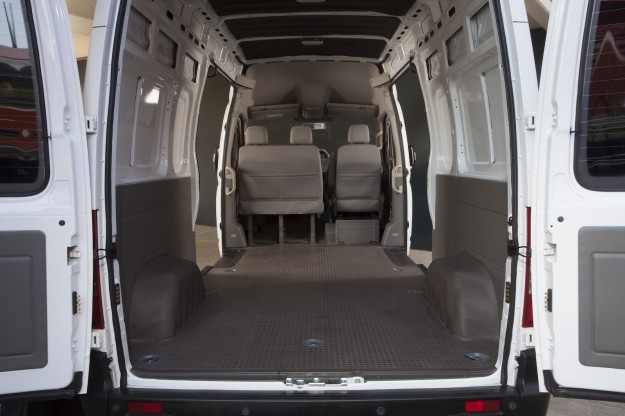
Dual sliding doors and rear barn doors are a positive and these are not always standard in these vans. The rear doors feel flimsy and overly light, however, and have to be slammed to shut them properly. Several of the test vans had uneven tailgate panels, with the panel surface flexing and depressing slightly around the door handle.
While the design of the van and most major components are proven, it remains unclear how the LDV body and other parts will hold up over time. The resale value of the LDV is also unknown.
The LDV V80 range has a high level of standard equipment at a sharp price, but most potential customers will need more than a $2000 incentive to buy it over a proven workhorse like the iLoad.
If LDV can prove its durability, fix some of the issues mentioned and cut the price further it could do well – but it will need to do all three things to become a major player in Australia’s commercial vehicle market.





